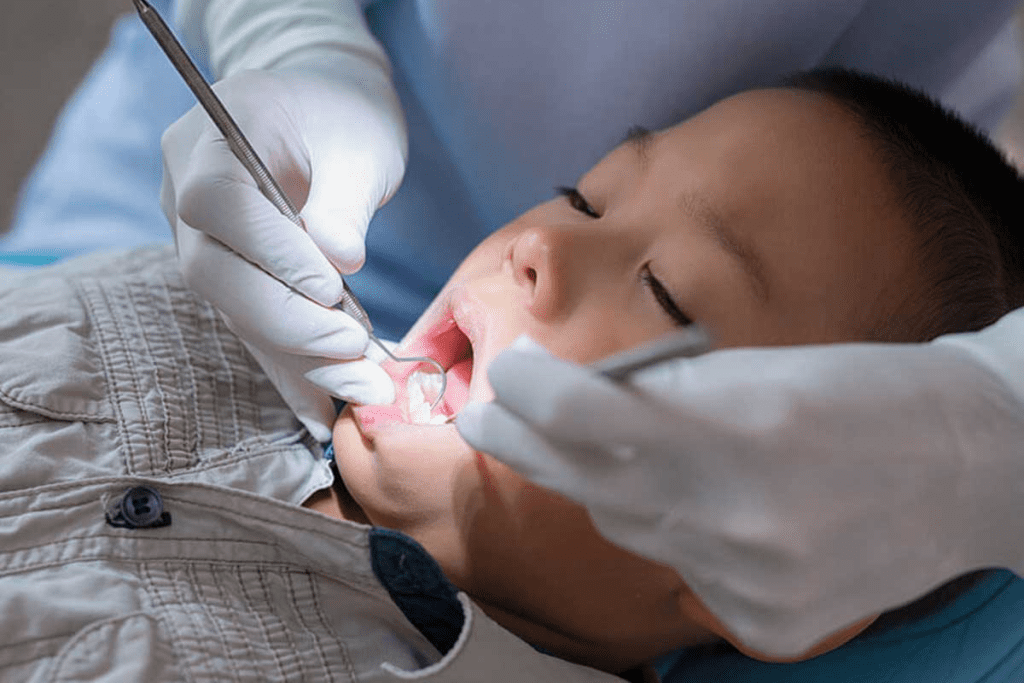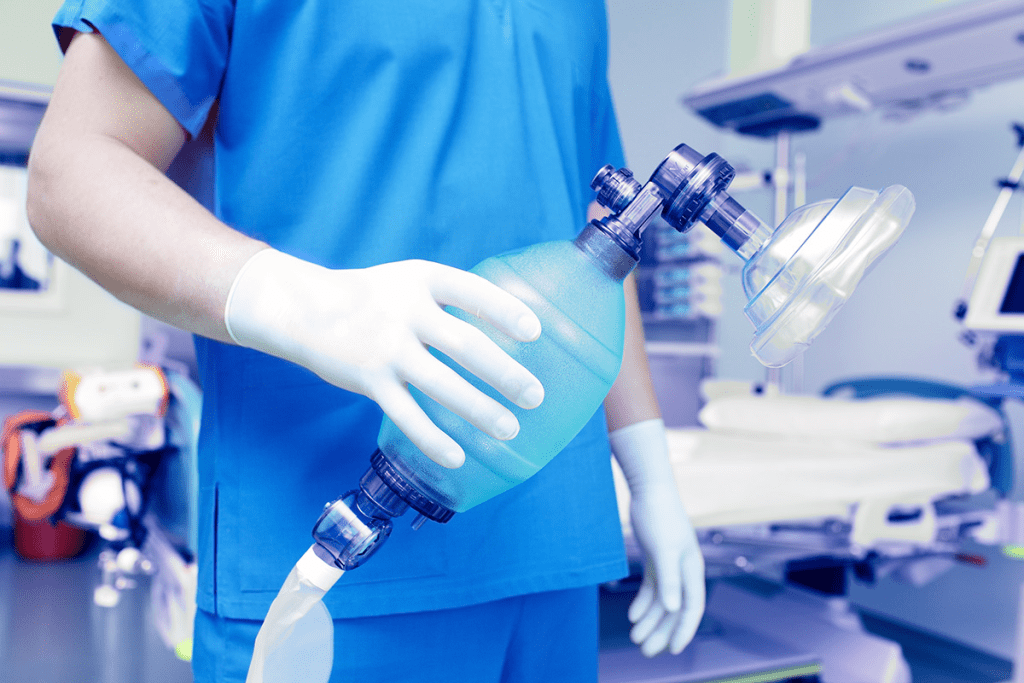Last Updated on November 14, 2025 by

Putting a 1-year-old under general anesthesia needs careful steps and special care. At our hospital, we follow strict safety protocols to protect our young patients at every stage.
We know that thinking about your child receiving general anesthesia can be stressful. That’s why our team of pediatric anesthesia experts is here to guide families with both medical expertise and compassion. We combine advanced techniques with kindness and understanding to ease parents’ concerns.
In this article, we’ll explain how we safely administer general anesthesia to a 1-year-old. We’ll also cover the safety measures we follow and the advanced monitoring technology we use to ensure children recover smoothly and comfortably.
Pediatric anesthesia is different because of the special needs of toddlers. We need to understand how their growth affects how they react to anesthesia. This knowledge helps us give them the best care.
Toddlers have smaller airways and breathe faster than adults. This makes it important to manage their airways well. Their metabolism is faster, which changes how anesthesia drugs work in their bodies. We must think about these differences when planning their anesthesia.
Many procedures need anesthesia for toddlers, like surgeries and some medical tests. We adjust our anesthesia plan for each child. We consider their age, weight, and the procedure they’re having.
Using advanced monitoring and carefully choosing drug doses based on their size and age is key. This ensures their safety and comfort.

The pre-anesthesia process aims to reduce risks and make the procedure smooth for your child. As a parent, you might worry about your child’s safety and comfort under anesthesia.
Your child will go through medical checks before the procedure. These include:
These steps help us spot any risks and create a special anesthesia plan for your child.
Fasting rules are key to avoiding risks during anesthesia. For 1-year-olds, we suggest:
It’s crucial to stick to these guidelines to keep your child safe.
As a parent, you’re very important in getting your child ready for anesthesia. We advise:
Together, we can make sure your child’s procedure is safe and successful.

Administering general anesthesia to a 1-year-old is a careful process. It’s tailored to their special needs. We know it worries parents, so we’ll walk you through each step.
The first step is the initial approach and sedation. Our team creates a calm and comforting space for your child. We use gentle methods to help your child relax before starting the anesthesia.
After sedation, we move to the anesthesia induction phase. We use methods made for young children, considering their weight, age, and health. Our anesthesiologists are experts in finding the best induction techniques for a smooth transition.
Effective airway management is key during general anesthesia. We use advanced techniques and equipment to keep your child’s airway safe. Our team watches your child’s vital signs closely and adjusts the anesthesia as needed.
We use advanced monitoring systems and drug dosages based on weight and age. This ensures your child gets the best care during the general anesthesia process.
Administering anesthesia to a 1-year-old requires careful thought about medication and dosage. We calculate the dosage based on the child’s weight and age. This ensures safe and effective anesthesia.
Our anesthesiologists use weight-based calculations to find the right dosage for your child. This method reduces the risk of bad effects and ensures the anesthesia works well.
We use various anesthetic agents, like sevoflurane and propofol, for kids. The choice depends on your child’s needs and the procedure.
Our team creates tailored medication protocols for each child. This personalized care ensures your child gets the best treatment.
Some important things to consider are:
During pediatric procedures, we use top-notch monitoring systems. These systems track vital signs and keep patients safe. They help us spot issues early and act fast.
Our vital signs tracking technology watches heart rate, blood pressure, and oxygen levels in real-time. This lets our team make quick, informed decisions.
We have specialized pediatric equipment made just for kids. It gives accurate readings and can handle frequent use.
Our team uses continuous assessment methods to check on patients. This includes advanced tech and clinical skills.
By mixing these methods, we give our young patients the best care during their procedures.
Understanding the risks of pediatric anesthesia is key to making informed choices. We do our best to avoid risks, but knowing possible complications is important. These can happen during or after anesthesia in young children.
Respiratory complications are a big worry. These can be mild, like oxygen issues, or serious, like laryngospasm. Research shows up to 36.8% of cases have respiratory problems. We watch our young patients closely to catch and fix any issues fast.
Respiratory issues are a big risk in pediatric anesthesia. We use advanced tools to keep an eye on vital signs. This helps us act quickly if a child’s breathing changes.
After the procedure, kids might feel sick or have other effects. We take care of them to make sure they recover well. This includes managing nausea and vomiting.
Cardiac risk factors are also something we consider. We check each child’s heart before anesthesia and watch it closely during the procedure. This helps reduce any heart-related risks.
Knowing about these risks helps us prepare and manage them. This ensures the safest experience for our young patients.
Specialized pediatric anesthesia teams are key to keeping young patients safe and comfortable during medical procedures. We know it’s scary to think about your child getting anesthesia. But our teams are ready with the latest knowledge and techniques to care for your child.
Our team of pediatric anesthesiologists has gone through tough training. They are experts in handling complex cases. They keep up with new techniques and research in pediatric anesthesia.
We use predictive modeling to figure out the risk of complications. This helps us make smart decisions about your child’s care. It lets us spot risks early and create treatment plans that fit your child’s needs.
Machine learning helps us predict which children might face higher risks. We use big data to find patterns and predict outcomes. This makes our care safer and more effective.
With specialized training, predictive modeling, and machine learning, we offer top-notch care for our young patients. We aim to give your child the best treatment, with as little risk as possible and lots of comfort.
At places like Liv Hospital, we follow international standards for pediatric anesthesia safety. We use the latest academic protocols to improve patient safety and outcomes. This ensures your child gets the best care.
General anesthesia for kids needs careful preparation and advanced monitoring. We use specialized care to lower risks. Our goal is to provide top-notch care for your child.
We use the latest techniques and technologies to ensure the best results. As a parent, you want the best for your child. We are committed to delivering that.
Is anesthesia safe for kids? With the right precautions and care, the risks can be greatly reduced. Our team is trained to handle the challenges of pediatric anesthesia. This gives you peace of mind during your child’s procedure.
General anesthesia makes a person very sleepy and unable to move. For 1-year-olds, we use careful plans and special monitoring. We also adjust the drugs based on their size and age to keep them safe.
Kids this age often need anesthesia for surgeries. Our team is skilled in making sure they stay still and pain-free. We focus on giving them the best care possible.
Preparing a child involves medical checks and following fasting rules. We also help parents understand their role. Our goal is to keep the child safe and comfortable.
Risks include breathing problems and effects after the procedure. We do everything we can to avoid these. We’re ready for any situation with the right tools and knowledge.
We watch heart rate, blood pressure, and oxygen levels closely. Our team checks the child’s health constantly. This helps ensure the procedure goes smoothly and safely.
Anesthesia’s effects usually last a few hours after the procedure. But it can vary. This depends on the anesthetic and the child’s health.
We watch over the child as they wake up. Our team is ready for any issues. We make sure they have a smooth recovery.
Side effects can include feeling very sleepy, nausea, and vomiting. We work to reduce these. We also advise on managing them at home.
Yes, anesthesia is safe when given by experts. We follow strict rules to ensure safety. This helps lower the risk of problems.
Subscribe to our e-newsletter to stay informed about the latest innovations in the world of health and exclusive offers!